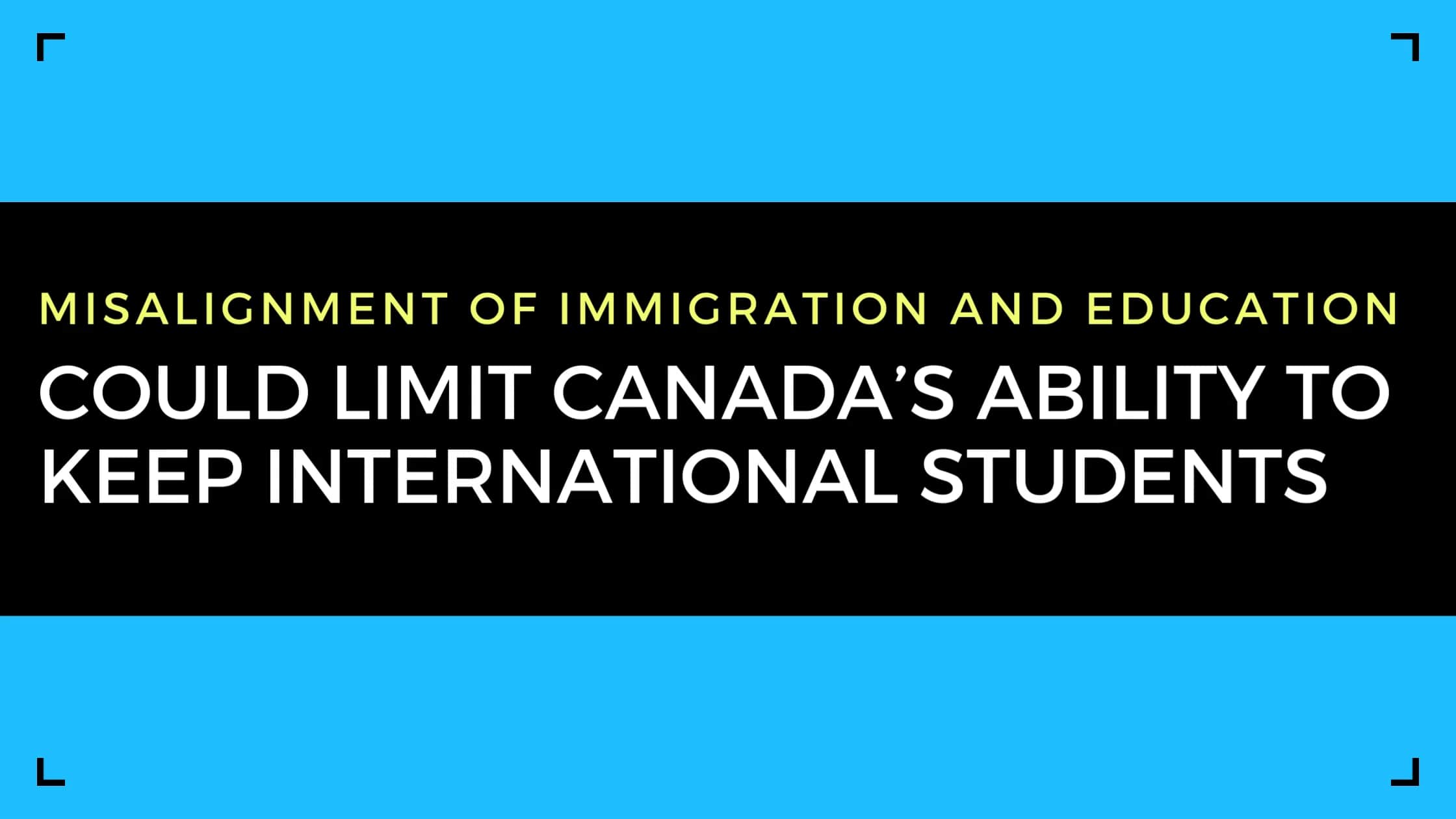International students have become critical to Canada’s future as this country opens more pathways to immigration.
Newcomers arrive in Canada as students have more opportunities to transition to permanent residency. And they’re meeting an identified need as they help to fill the increasing number of job vacancies in this country created largely through an aging workforce.
With Canada’s rapidly aging demographic — roughly 20 per cent of the Canadian population is expected to be in the position to retire in the next five years — that need is expected to become even more acute. Governments have acknowledged that low domestic birth rates drive the need to boost the population — and the tax base — through immigration.
Solving the labour crisis
A recent RBC Economics report — Course Correction: How international students can help solve Canada’s labour crisis — calls for a targeted approach to sustainably grow Canada’s education sector and effectively leverage its international student population as a future source of labour and permanent residents.
A growing percentage of newcomers arriving in Canada are international students, and education falls under the purview of the provincial governments. But because the federal government oversees immigration, it is responsible for issuing study permits. That presents something of a dichotomy and could prove an impediment to offering a unified education product.
We can’t simply present Canada as having an education sector that achieves a certain threshold or with strengths in certain sectors when education is presented in different ways from province to province. Saskatchewan’s brand of education looks very different from what’s offered in Ontario or British Columbia, for example. And those systems differ, again, from what is available in the Atlantic provinces.
Limited pathway for work
Another barrier has been a limited pathway for international students looking for work opportunities. Only students entering the public college or university system have been eligible for post-graduate work permits (PGWP).
Some rules have been liberalized to allow most private career colleges to enroll international students. For example, private colleges are no longer required to hold international student revenue in a trust account.
In addition, the Ontario government has loosened some of the restrictions to allow more schools to accept international students. That enables newer private institutions to compete for the large and profitable international student market and train them.
International students have proven to be an important funding source for Canadian post-secondary institutions. They represent less than a fifth of university enrolments, but account for a third of tuition fees paid, presenting a lucrative revenue source for post-secondary institutions.
Such liberalization efforts by the provincial government do not go far enough and do not speak to PGWP eligibility, often a tipping point for international students deciding whether to attend public versus private post-secondary institutions.
The pathway to immigration for students has proven successful. Statistics Canada found among immigrants admitted in 2018, study and work permit holders obtained a median wage of $44,600 within a year, compared to $25,700 for immigrants without Canadian work or study experience.
Canada has solidified its reputation as a global place of learning, according to the RBC survey. It has become the third largest destination for international students after the U.S. and Australia. Still, more could be done to capitalize on Canada’s perceived neutrality, laudable Gini coefficient numbers, and political climate.
Standards of education
There is a risk, though, that schools with less experience and no track record could result in a disparate quality of education. And that is something that needs to be monitored to ensure the overall standard of education provided remains high and that Canada’s education sector maintains an unblemished record.
Curriculum and delivery standards, for example, should be kept high. It may be convenient for a regulator to approve dated curricula that have few updates and therefore require little work to have objective experts approve. But maintaining high curriculum and program delivery standards will enhance Canada’s reputation within the higher education sector, buttress a private institution’s valuation, and ensure that students receive the quality skills training they deserve.
That is particularly important given the increased global competition for international students. Other countries are updating their immigration policies to support employers’ need to fill vacancies.
Overall, there is a need to take a very measured approach to how we accept and screen international students and approach the labour market demand. While the RBC report indicates a high entrepreneurial rate among international students compared to domestic students, newcomers to Canada have also historically filled low-level jobs.
Do we really want foreign trained doctors driving Uber’s? Among the other elephants in the room, this is surely one of them.
Look forward to your comments, criticisms, and feedback! Thanks for reading.
